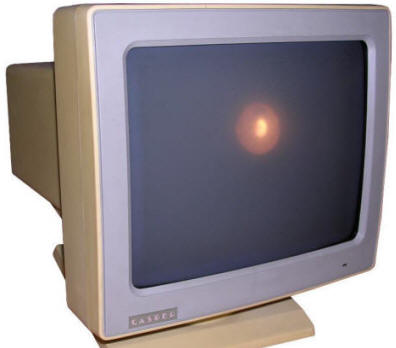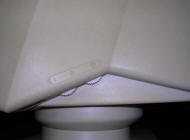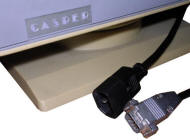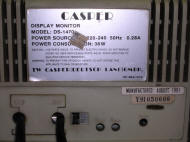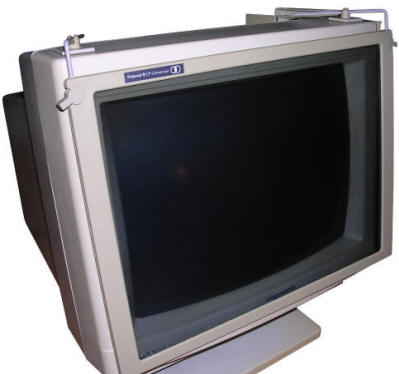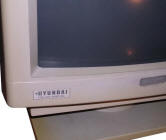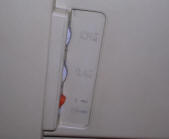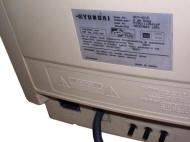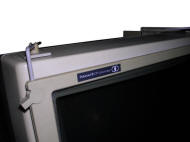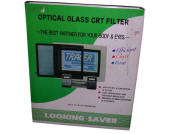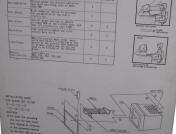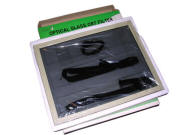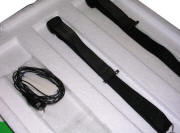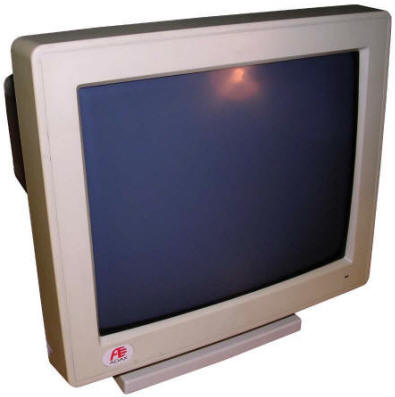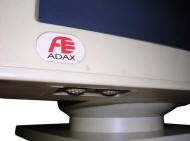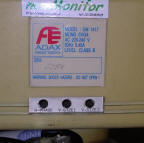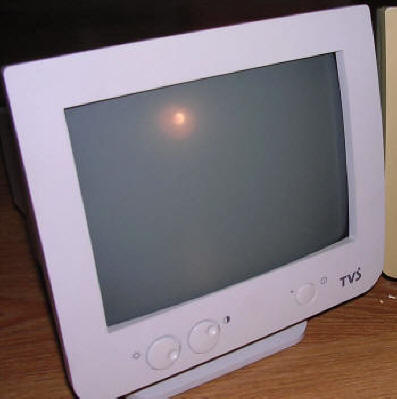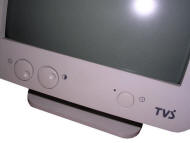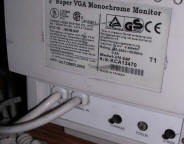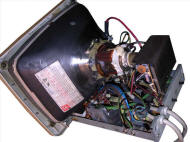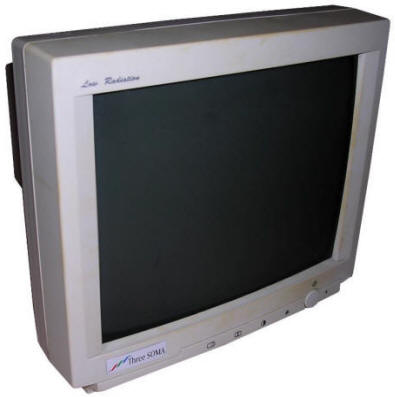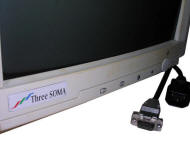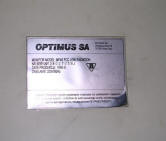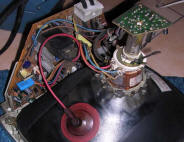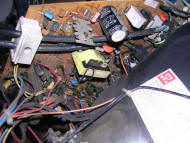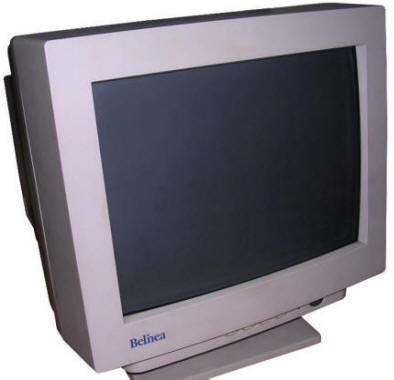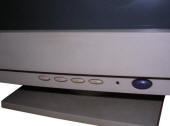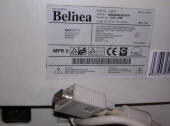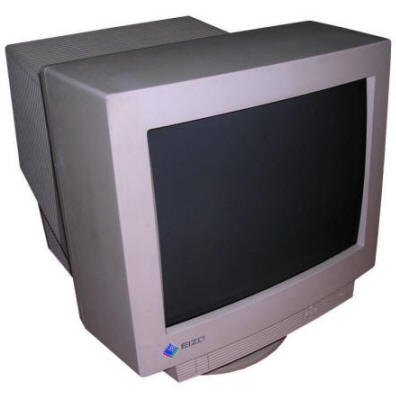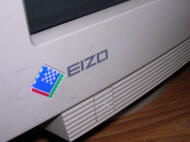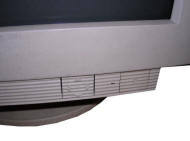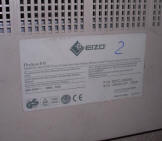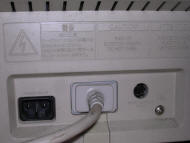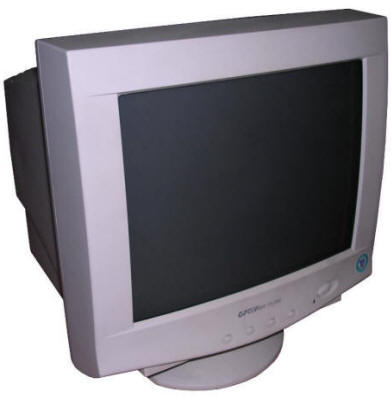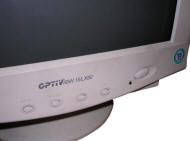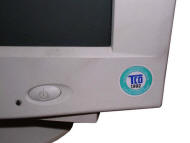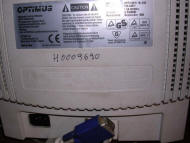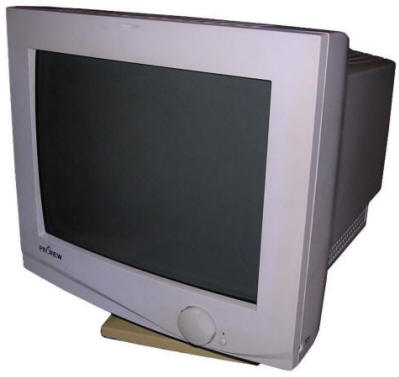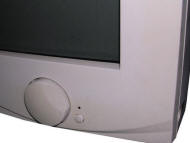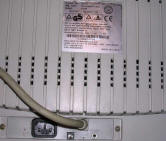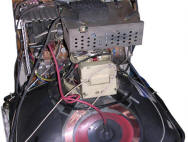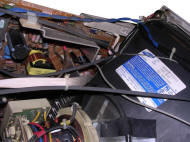Monitors and displays (2)
VGA of 1990s
In my collection, different PC displays accumulated over time with
computers, PCs, sometimes as part sources which have been surprisingly
repaired. From simple TV-like displays with green screens, to complex
monitors with digital control circuits. Here is a small travel around
these. Don't forget to look at some PCs, as they also have monitors to
complete a set.
In 1987, VGA board has been released as improvement of
EGA (which was not too popular since its debut around 1985), offering a
640x480 resolution in 16 colours. But these were not limited, TTL-type
colour lines like in CGA or EGA, VGA displays offered a full-analog RGB
lines. Quickly it was found that with some tricks more colours can be
achieved and later the VGA standard has been improved with Super-VGA -
first with 800x600 resolution and improved to 1024x768, shifting IBM's
8514 video board from market. With colour VGA displays, many
simplifications had to be removed - the monitor had to support colour on
analog lines and only resolution was its limitation.
To display a picture in specific resolution, monitor must support signal
in certain frequencies - the bigger resolution, the more quickly signals
change, and the better monitor's electronics must be. More, if
unsupported frequency is used monitor's circuits may be even damaged.
That's why you cannot just hook any monitor up to any configuration.
Although in early 1990s Hercules video boards and displays were still
distributed, VGA and its successors dominated the market.
| Cordata CMC-1414ADE |
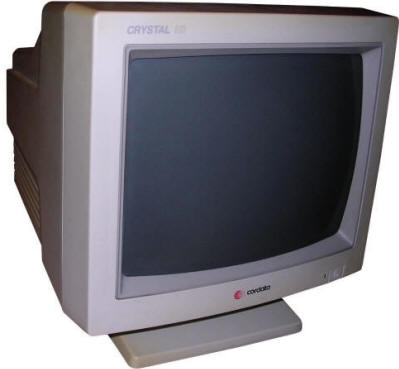 |
|
| Approx. year: | 1991 | |
| Type, connector: | DB15, VGA, 800x600 | |
| CRT: | 14" colour | |
| This is a colour Super-VGA monitor
of early 1990s. Its 14-inch tube can show picture in 640x480 or
800x600, but displaying 1024x768 in typical scan rates is
outside its capabilities - only interlaced mode is supported.
Contrary to many similar CRTs, this one has significant amount
of trimmers and knobs to tune picture brightness, contrast,
horizontal and vertical sizes and positions. These displays were
made by Daewoo and sold under different brands. This unit has been bought with 386 computer through German company and was operating since mid-1992 with special shield on it. Later it was used with Pentium computer, until it was replaced around 2003. I got it later, around 2005, and since then used in my "service shelf" to test PCs. It works without problems even today [2017]. |
||
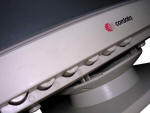
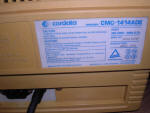
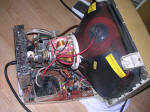
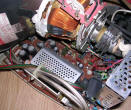
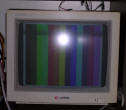
Protective shield... and why it was used? In the pictures below, you can see a "factory new" glass
filter for CRT screen. Such shields were used on nearly every
new CRT screen in 1990, usually they were glued with stickers,
hanged on special belts or mounted on Velcros. Why? There were a
few reasons. |
||
| IBM PS/1 monitor |
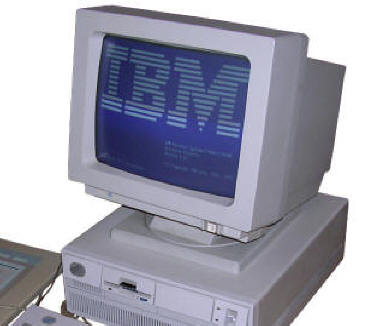 |
|
| Approx. year: | 1993 | |
| Type, connector: | DB15, VGA, 800x600 | |
| CRT: | 14" colour | |
| A display used mostly with IBM PS/1
computers, I got it with PS/2
model 70 where its pictures can be seen.
|
||
| Digital PCXBV-PC |
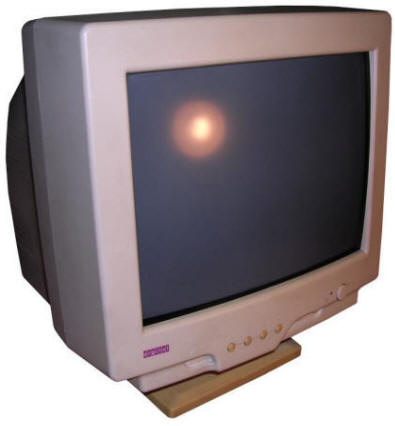 |
|
| Approx. year: | 1994 | |
| Type, connector: | DB15, VGA, 1024x768 | |
| CRT: | 15" colour | |
| In mid-1990s, newer displays
acquired one distinguishable function: OSD, called On-Screen
Display menu. This is one of the early displays with OSD for
manipulating picture size and position, but brightness and
contrast is still set with dials. Maybe it's more comfortable
and quicker to change? This is quite early OSD, but still OSD -
a text menu shown on screen during setting. Earlier models had a
series of LEDs displaying currently chosen setting and +/-
buttons to set values. Generally the display has still quite
nice picture quality and was used until 2010s! It was retired
only to be replaced with 17-inch Philips. What is interesting, it has added a board inside which offered ability to turn the monitor off by software. This "soft-off" was an early attempt to introduce energy saving modes to displays. |
||
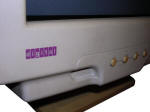
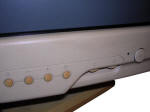
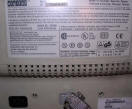
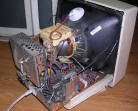
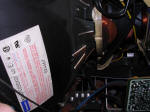 |
||
| Philips Brilliance 105 |
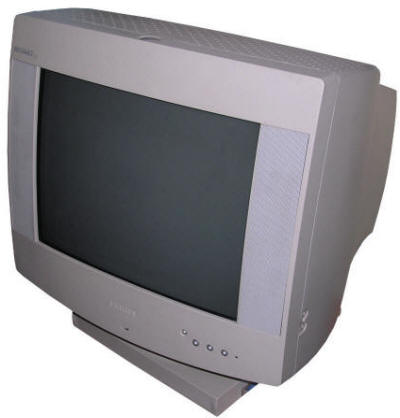 |
|
| Approx. year: | 1998 | |
| Type, connector: | DB15, VGA, 1024x768 | |
| CRT: | 15: colour | |
| This is an "all-in-one" monitor,
having not only a nice-quality display but also a built-in
speakers and microphone. Thanks to using elongated sound pipes,
speakers don't interfere with CRT. Its 15-inch tube gives a nice
and comfortable picture, and according to specs it is
theoretically possible to get 1280x1024 on it. Its appearance is not so slim and compact as in other displays, this one has a wide casing with speakers on sides of the screen and its rear doesn't get as narrow as in other displays. 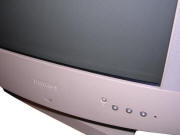 |
||
| Unfortunately Philips got too far in one aspect: Configuration.
The dials in front of display are only for volume, brightness
and contrast. If it's needed to set picture size, position,
correct shape or colours, all is done using Philips software
which communicates with display by... flashing bitmaps! Seriously, while changing settings it looks like
a series of specific colour bits are shown on screen. This way
uncertain display-detection pins are not used and additional
cables are not needed, but the software works only in Windows 9x
(probably partially in XP). I got my unit with disappearing colours problem, and built-in signal cable had to be replaced. Few years later capacitors near HV circuits caused slight distortion, which was fixed. It is still used. |
||
| IBM G51 |
 |
|
| Approx. year: | 1999 | |
| Type, connector: | DB15, VGA, 1024x768 | |
| CRT: | 15" colour | |
| An OEM for
IBM PC-300PL computer. Be careful, it overheats. Generally: Picture quality: Worse than the worst LG. Overheating: High, possibility of fire. Change to repair: Knowing which part they screwed up "is forbidden" (official IBM state). Avoid it.
|
||
|
|
Previous part |
|





